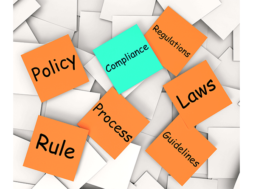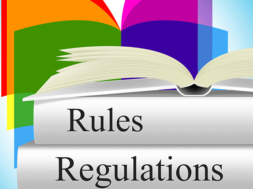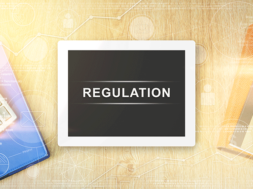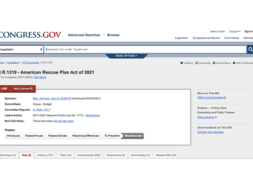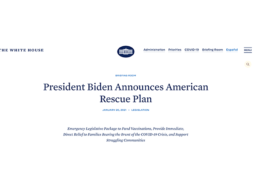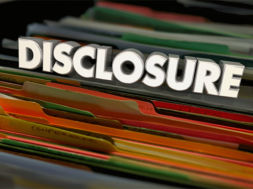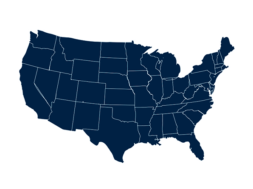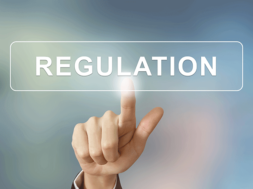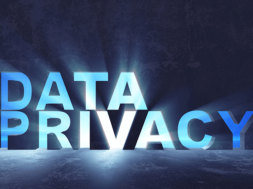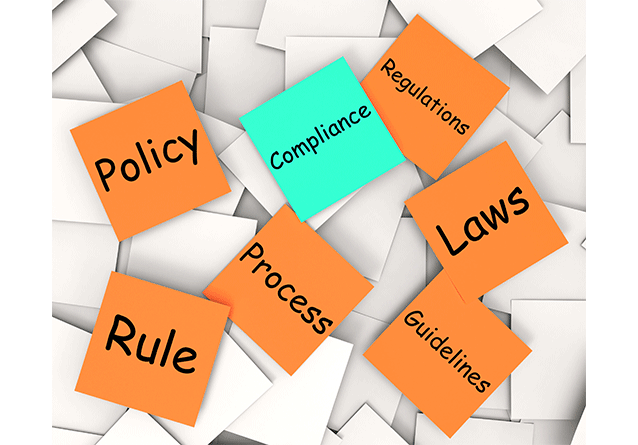
Making Sense of ED’s State Authorization Rule
By Aaron Lacey, Partner and Leader, Higher Education Practice and Katie Wendel, Counsel, Higher Education Practice, Thompson Coburn LLP
For nearly a decade, the U.S. Department of Education (ED) has worked to formulate a rule addressing when institutions with distance education programs must be authorized by the states in which they enroll online students. Though simple in concept, crafting the “State Authorization Rule” has proven complex and controversial, as evidenced by a series of rulemakings, multiple lawsuits, and abundant, public criticism. Most recently, an interpretation of the rule threatened to render online students in California ineligible for federal financial aid. In this article, we consider the current status of the Rule, discuss the drama in California, and offer thoughts for those charged with bringing their institutions into compliance.
Understanding the status quo
First and foremost, we emphasize that the 2016 State Authorization Rule is currently the law of the land. As detailed in the timeline located at the end of this article, the Obama administration promulgated the 2016 State Authorization Rule in December 2016. Set to become effective on July 1, 2018, the Trump administration delayed the implementation of the 2016 Rule at the eleventh hour, announcing its intent to create a new version of the regulation through negotiated rulemaking. Many in higher education, and particularly those offering distance education programs, applauded this move, having vigorously argued that critical elements of the 2016 State Authorization Rule were unclear and could not be properly implemented.
This feeling, however, was far from universal. In August 2018, the National Education Association and the California Teachers Association sued the Department in the U.S. District Court for Northern California, asserting that the delay violated the Administrative Procedures Act. On April 26, 2019, the U.S. Magistrate Judge considering the matter ruled against the Department and vacated the current administration’s delay, staying the vacatur for 30 days to minimize disruption. The court held that ED should have conducted a negotiated rulemaking before delaying the 2016 Rule and that the agency did not have sufficient cause to forgo the process. A month later, on May 26, 2019, the 2016 State Authorization Rule took effect.
For the next two months, there was no communication from the Department regarding the Court’s decision, and there seemed to be limited recognition in higher education circles that the 2016 Rule had abruptly become effective. Then, on July 22, 2019, the Department posted an Electronic Announcement acknowledging that the 2016 State Authorization Rule took effect on May 26, 2019. A formal acknowledgement of the 2016 Rule’s effectiveness was published in the Federal Register a few days later.
The California conundrum
As many are aware, ED’s July 22 Electronic Announcement included as an attachment a brief “Q&A” document that made the following provocative assertion:
“[U]nder the 2016 regulation now in effect, students residing in California receiving distance education or correspondence courses from out-of-state public or non-profit institutions are ineligible for Title IV programs until such time as the State of California provides those institutions with an appropriate complaint process or enters into a reciprocity agreement.”
This conclusion flowed from a regulatory quirk, unique to California, which left certain students in the state without access to a complaint process. California law generally requires out-of-state schools enrolling California residents in online programs to register with the Bureau for Private Postsecondary Education (BPPE). Once that registration is in place, the BPPE accepts and reviews complaints from the in-state students of those out-of-state institutions. However, out-of-state accredited public and non-profit schools are exempt from the registration requirement and can enroll students without oversight from the BPPE, as a result those California students do not have access to the BPPE complaint mechanism. It so happens that California also is the only state that continues to decline participation in the State Authorization Reciprocity Agreement (SARA). SARA has a complaint process in place for online students residing in participating states. But online students in California lack access because the state does not participate in SARA.
Thus, the practical result of the BPPE exemption, combined with California’s decision to decline membership in SARA, is that students residing in California who are enrolled in out-of-state accredited public and non-profit schools did not have a clear path to lodge formal complaints, as required under the 2016 State Authorization Rule. Consequently, at least with respect to their California students, these schools were unable to establish Title IV eligibility under the 2016 Rule.
Following much wailing and gnashing of teeth, the California Department of Consumer Affairs announced on July 29, 2019, that it has created and implemented a process for accepting and handling complaints from students at out-of-state public and non-profit institutions. ED issued a formal acknowledgement of California’s efforts on Aug. 2, 2019 and confirmed that California students will not experience an interruption in their Title IV student aid. While ED found that California’s proposed solution still presented problems, it “assume[s] that California will modify its plan” to address these issues, thus verifying that the “California Conundrum” has been satisfactorily resolved.
To comply or not to comply (with the 2016 State Authorization Rule)
Insofar as the drama with California has heightened awareness that the 2016 State Authorization Rule is now in effect, we think it has served a valuable purpose. As we noted above, in the period since May 26, there seems to have been limited awareness in the higher education community that the 2016 Rule is now effective.
Even with this knowledge, some may question whether it is worth expending significant institutional resources to comply with a regulation that may have a very limited shelf life. As detailed in our timeline located at the end of the article and noted above, the current administration initiated a negotiated rulemaking last year for the purpose of creating a new 2019 State Authorization Rule. The proposed 2019 Rule was published in the Federal Register on June 12, 2019. Should ED promulgate a final version of the 2019 Rule on or before Nov. 1, 2019, it would become effective July 1, 2020, and at that time would replace the 2016 State Authorization Rule discussed above.
Moreover, it is likely that ED could designate all or part of the 2019 State Authorization Rule for early implementation (as it did in July with its 2019 Gainful Employment Rule). Importantly, in its Aug. 2 letter regarding California, ED stated that it intends to publish the new 2019 regulations for early implementation as soon as possible. If ED promulgates its final 2019 State Authorization Rule in October, as it has indicated it intends to do, and designates it for early implementation, schools might be able to cease complying with the 2016 Rule as early as this fall. An administrator faced with creating a compliance system might be forgiven for wondering whether the cost of compliance is justified.
We suggest that it is. In addition to establishing requirements for state authorization, the 2016 Rule also imposes significant student disclosure requirements on institutions offering online programs, especially where graduates of those programs will seek some form of licensure (e.g., teachers, health professionals). Failing to comply with these requirements could lead to state administrative action, private consumer protection complaints, or borrower defense claims, in addition to prompting an ED review. And keep in mind that this exposure will continue to persist, even after the 2019 State Authorization Rule is put into place. A student who failed to receive a required disclosure during the timeframe the 2016 Rule was in effect could bring a consumer protection action, or claim a borrower defense discharge, well after the 2016 Rule has been displaced. Similarly, ED could sanction an institution for non-compliance months or years after the fact.
Preparing for the 2019 State Authorization Rule
Another reason to invest in compliance with the 2016 Rule is because it will make compliance with the 2019 State Authorization Rule that much easier. The proposed 2019 Rule would require that institutions have authorization (directly or through a reciprocity agreement) in the state in which a student is located. A student’s location would be determined at enrollment, and thereafter, when the student reports a location change. This is considered by many in the distance education community to be a significant improvement over the 2016 State Authorization Rule, which problematically ties authorization to the student’s state of residence. But either way, institutions will have to create and maintain control systems that enable them to ascertain and monitor the residence/location of their online students, and to promptly inform students if they move to a state where the school may lack authorization.
To the great relief of many postsecondary administrators, the bulk of the burdensome distance education disclosures required under the 2016 State Authorization Rule would be jettisoned entirely by the proposed 2019 Rule, with the understanding that much of the information that must be disclosed under the 2016 Rule already must be disclosed under other sections of the law. On the other hand, disclosures relating to professional licensure not only would remain, they would be applied to all programs, without regard to whether they are offered online or on ground. Consequently, time invested by institutions in complying with this aspect of the 2016 Rule will be time very well spent.
Researching, creating, and monitoring accurate disclosures relating to professional licensure is a complicated and time-intensive undertaking. In the online setting, even where a school is making every effort to provide such information, it can be an extraordinarily difficult task. Professional licensure standards can be complex, and vary from one jurisdiction to the next. They also change with regularity. Consider, for example, a school that offers an online Master’s in Education and enrolls students from across the United States. The institution would need to master, and stay abreast of, the teacher certification requirements in every jurisdiction where it has a student, and ensure that its advisors can accurately communicate to prospective and current students whether the program will permit them to obtain licensure in their home state. Schools that fail in this effort could be subject to regulatory action, claims of misrepresentation under consumer protection statutes, or both. As the 2019 State Authorization Rule moves toward finalization, we recommend that institutions pay particular attention to the professional licensure disclosure requirements.
A little something to help you on your way
As noted above, the 2016 State Authorization Rule includes disclosure requirements that apply to any institution that offers a program that is provided, or can be completed, solely through distance education (notably, the rule still covers online programs that have an on-ground internship or practicum). The required disclosures are broken into two categories: public disclosures and direct disclosures. The public disclosures must be “made available” to enrolled and prospective students, which means the information need not be distributed directly, but can be disclosed through written and online publications. The individualized disclosures must be disclosed “directly and individually” to enrolled and prospective students. Institutions also must obtain and maintain evidence of receipt from any prospective student who received a direct disclosure and subsequently enrolled in the program. In an effort to assist institutions as they work to comply with the 2016 State Authorization Rule, we’ve developed the following charts, which summarize the disclosure requirements in the 2016 State Authorization Rule, by category.
Public Disclosures
The following information must be made available to the public through written and online publications.
- State Authorization. Whether the institution is authorized by each state in which enrolled students reside and how it is authorized in each state (with an authorization from each specific state agency or as part of a state authorization reciprocity agreement).
- Consequences of Residency Change. The consequences of relocating to a state where the institution does not meet state requirements, or in the case of a gainful employment program, where the program does not meet licensure or certification requirements in the state.
- Description of Compliant Processes. A description of the process for submitting complaints, including contact information to make complaints in the state where the institution has its main campus, contact information to make complaints to the state in which the student resides, and, if applicable, the appropriate contact information for complaints under any state authorization reciprocity agreement the institution has entered into.
- Historic Adverse Actions. Any adverse actions taken by a state or accrediting agency against the institution related to distance or correspondence education and the year that the action was initiated, for the previous five calendar years.
- Refund Policies. Any refund policies that it must comply within any state in which a student resides.
- Licensure and Certification Prerequisites. Applicable licensure or certification requirements for the occupation the program prepares a student to enter and whether the program meets those requirements, including: (1) the applicable educational prerequisites for professional licensure or certification for the occupation for which the program prepares students to enter in any state in which the program’s enrolled students reside and for any other state for which the institution has made a determination regarding such prerequisites; (2) whether the institution’s distance education program or correspondence course satisfies those applicable educational prerequisites for professional licensure or certification; and (3) for any state for which the institution has not made a determination with respect to the licensure or certification requirement, an institution is required to disclose a statement to that effect.
Direct Disclosures
The following information must be disclosed “directly and individually” to students.
- Licensure and Certification Determinations. To prospective students, any determination by the institution that the program does not meet licensure or certification prerequisites in the state of the student’s residence. If this is the case, any student who receives the notice and subsequently enrolls must provide acknowledgement to the institution that he or she received the disclosure.
- Licensure and Certification Changes. To prospective and enrolled students, any determination by the institution that the program ceases to meet licensure or certification prerequisites of a state, within 14 calendar days of that determination.
- Notice of New Adverse Actions. To prospective and enrolled students, any adverse action initiated by a state or accrediting agency related to programs offered by the institution solely through distance education or correspondence within 30 days of the institution becoming aware of the action.
As your institution’s academic, admissions, and compliance personnel work to ensure that appropriate processes and controls are put into place, you may also want to review the webinar located at:
Presented in April of last year, this webinar explores the 2016 Rule in detail, considers many of the more nuanced issues, reviews key guidance offered by ED in the preamble to the final rule, and offers some practical thoughts regarding implementation. The full presentation is available free and on demand.
Institutions with questions regarding the State Authorization Rule are welcome to contact Aaron Lacey or Katie Wendel. Aaron Lacey is the leader of Thompson Coburn’s Higher Education practice, host of the firm’s popular Higher Education Webinar Series, and editorial director of REGucation, the firm’s higher education law and policy blog. He is available at (314) 552-6405 or alacey@thompsoncoburn.com. Katie is a member of the Firm’s Higher Education Practice, and represents higher education clients in a wide range of regulatory and transactional matters. She is available at (202) 585-6917 or kwendel@thompsoncoburn.com.
The purpose of this article is to provide news and information on legal issues. It is not and should not be considered legal advice. A version of this article also appeared in REGucation, Thompson Coburn’s higher education blog.
Last Updated: August 5, 2019
The primary purpose of the U.S. Department of Education’s State Authorization Rule is to require institutions offering programs through distance education (or correspondence) to be authorized to offer education by each state in which they enroll students, if such authorization is required by the state.1 The rule also imposes significant student disclosure requirements on institutions offering online programs, especially where graduates of those programs will seek some form of licensure (e.g., teachers, health professionals). Below, we provide a chart detailing the noteworthy events that have occurred to date in the Department’s efforts to create a final State Authorization Rule. The events listed below the bolded black line are speculative.
| State Authorization: Rulemaking Timeline | ||||
| Date | Rulemaking Event | |||
| Oct. 29, 2010 | ED publishes its 2010 State Authorization Rule at 34 CFR 600.9(c), which covers state authorization requirements for distance education programs. | |||
| July 12, 2011 | U.S. District Court for DC vacates the 2010 State Authorization rule on procedural grounds. | |||
| June 5, 2012 | U.S. District Court of Appeals for DC affirms the District Court decision to vacate the 2010 State Authorization Rule. | |||
| Feb. – April 2014 | ED carries out a negotiated rulemaking to create a new State Authorization Rule. Consensus is not achieved. | |||
| July 25, 2016 | ED publishes its proposed 2016 State Authorization Rule in the Federal Register. | |||
| Dec. 19, 2016 | ED publishes its final 2016 State Authorization Rule in the Federal Register, with an effective date of July 1, 2018. | |||
| May 25, 2018 | ED proposes to delay significant elements of the 2016 State Authorization Rule and seeks public comment. | |||
| July 1, 2018 | Original effective date of the 2016 State Authorization Rule. | |||
| July 3, 2018 | ED publishes a final rule delaying until July 1, 2020, those elements of the 2016 State Authorization Rule that concern state authorization of distance education. ED does not delay those elements of the Rule concerning authorization of foreign additional locations. | |||
| July 30, 2018 | ED announces a rulemaking to create a new Accreditation and Innovation Rule, and indicates that a new State Authorization Rule will be negotiated as part of the process. | |||
| Aug. 23, 2018 | The National Education Association and the California Teachers Association sue ED, asserting that the delay of the 2016 State Authorization Rule violated the APA. | |||
| Jan. – Apr. 2019 | ED carries out a negotiated rulemaking to create a new Accreditation and Innovation Rule, and a 2019 State Authorization Rule is formulated as part of that effort. Consensus is achieved, obligating ED to use the agreed upon draft consensus language in its proposed rules. | |||
| April 26, 2019 | U.S. District Court for Northern CA rules that ED violated the APA when it delayed the 2016 State Authorization Rule, and vacates the delay effective May 26, 2019. See National Education Association v. DeVos, No. 18-cv-05173-LB (N.D. CA April 26, 2019). | |||
| June 12, 2019 | ED publishes its proposed 2019 State Authorization Rule in the Federal Register (as part of its proposed Accreditation and Innovation Rule). | |||
| July 29, 2019 | ED acknowledges that 2016 State Authorization Rule is effective in Federal Register announcement, and releases guidance document indicating that students residing in California receiving distance education or correspondence courses from out-of-state public or non-profit institutions are ineligible for title IV programs. | |||
| August 2, 2019 | ED issues a formal acknowledgement of California’s efforts to comply with the 2016 Rule and confirmed that California students will not experience an interruption in their Title IV student aid. | |||
| Oct. 2019 | ED publishes its final 2019 State Authorization Rule in the Federal Register (as part of its final Accreditation and Innovation Rule), with an effective date of July 1, 2020. | |||
| July 1, 2020 | Effective date of the 2019 State Authorization Rule. | |||
1Schools lacking authorization in a state would be prohibited from awarding federal financial aid to students in the unauthorized location.
Disclaimer
Please note that the purpose of this document is to provide news and information on legal issues and all content provided is for informational purposes only and should not be considered legal advice. The transmission of information from this document does not establish an attorney-client relationship with the reader. If you desire legal advice for a particular situation, you should consult an attorney.
AARON LACEY is a partner in Thompson Coburn’s Higher Education practice and editorial director of REGucation, the firm’s higher education law and policy blog. An experienced attorney, with time served both as outside and in-house counsel, Aaron assists postsecondary institutions to navigate complex legal and regulatory matters, including mergers and acquisitions.
Contact Information: Aaron Lacey // Partner and Leader, Higher Education Practice // Thompson Coburn LLP // 314-552-6405 // alacey@thompsoncoburn.com // https://www.thompsoncoburn.com/people/aaron-lacey // LinkedIn: https://www.linkedin.com/in/aaron-drew-lacey-3353742
KATIE WENDEL handles a myriad of legal and regulatory work for institutions of higher education, and regularly counsels institutions on the regulatory aspects of postsecondary transactions.
Contact Information: Katie Wendel // Counsel, Higher Education Practice // Thompson Coburn LLP // 202-585-6917 // kwendel@thompsoncoburn.com // https://www.thompsoncoburn.com/people/katie-wendel // LinkedIn: https://www.linkedin.com/in/katie-wendel-8352a66a/
